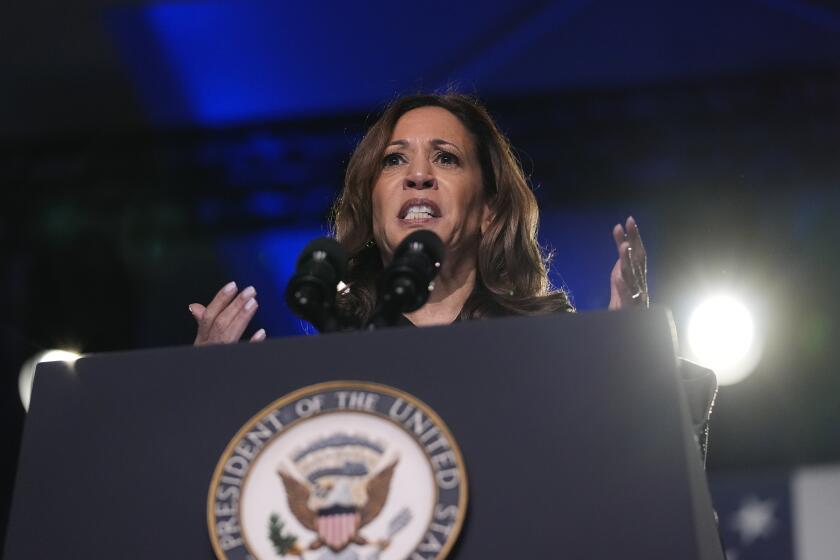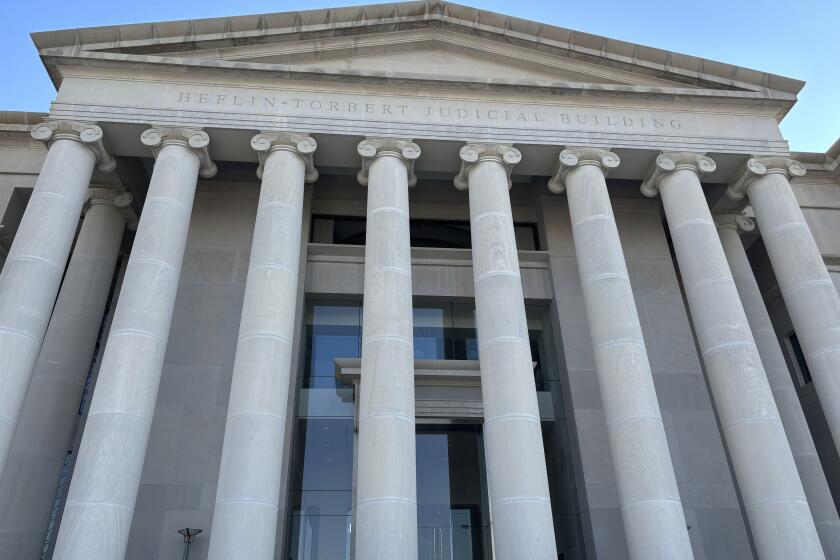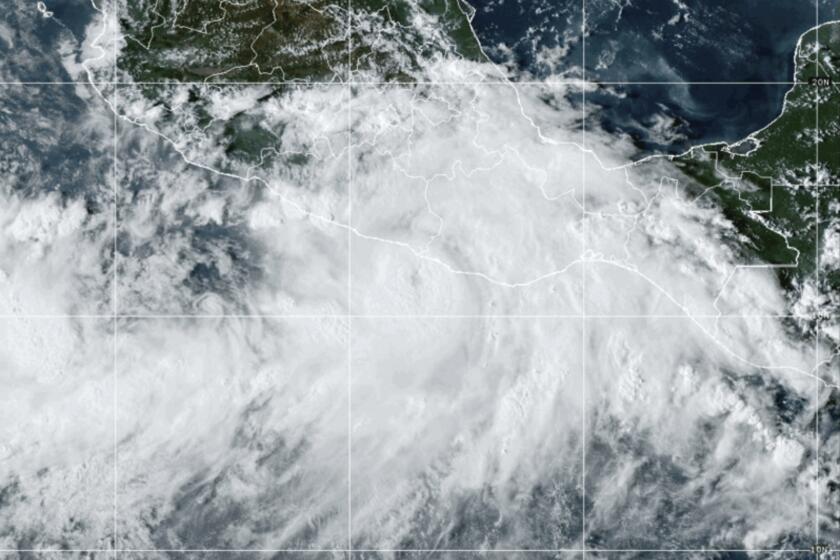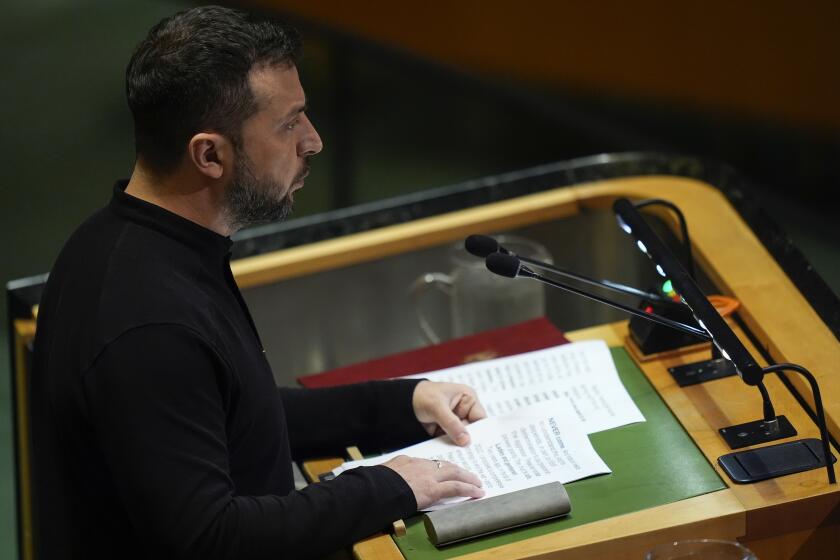Land Is the Field of Battle in Venezuela
On an early-morning survey of the sprawling savannas that host his cattle, Alejandro Branger climbs out of his SUV and casts his gaze beyond the macaws squawking in the nearby mango trees and the storks wading in a soggy marsh. He is on the lookout for an elusive blackbird, the yellow-knobbed curassow.
“They make a soup of the pauji. It used to be all over the plains, but now you don’t see it,” Branger says. “If this land is given to the peasants, we can forget about the fauna.”
Miles away, on another part of Branger’s 200,000-acre ranch, squatters Ricardo Cortez and Dominga Tovar are too busy trying to eke out a living to have any interest in the pauji or dozens of other endangered species that the Branger family says it protects.
“We don’t care about that at all,” says Tovar, who has been squatting on Branger property for more than four years with her common-law husband and eight of their 14 children in a shanty of sticks and thatched palm fronds. “They can’t come along and send us away from here. We have nowhere else to go.”
Branger’s pastures and nature park, called Hato Pinero, have become a battlefield as Venezuela’s government seeks to narrow the great divide between the country’s small landed gentry and a massive underclass lacking education, property and hope.
Almost 90% of Venezuela’s 25 million people live in crowded cities, and 70% of the population live in poverty. Many of the poor were drawn to urban areas decades ago by the booming oil industry and the manufacturing jobs that are now disappearing in the face of stiff international competition.
The government of President Hugo Chavez hopes to give the poor a leg up by luring jobless slum dwellers back to the countryside. In a nation where three-fourths of the arable land is owned by less than 5% of the population, officials want to redistribute some property to the needy.
To that end, the National Land Institute recently deemed Hato Pinero “idle” and announced that much of the property, bought by Branger’s family in 1951, will be parceled out to people such as Cortez and Tovar.
Allowing the impoverished to farm on land declared idle, the government says, also will help improve “national food security,” an elusive goal in Venezuela, which imports 80% of what it eats.
But the Brangers have vowed to fight what they see as Chavez’s populist ploy to cast them as elitist enemies of the government’s “revolution for the poor.” They and other large landowners, as well as conservationists, also say the policy is opening the door to environmental pillage.
Hato Pinero, which includes pastures, forest and swampland within its approximately 310 square miles, is the last known refuge of jaguars and pumas in Venezuela. Although the Brangers have turned the ranch into one of the country’s leading beef producers, they also have cultivated the property as an eco-tourist destination.
The Brangers banned hunting after purchasing the parcel, which they say has allowed 850 floral species to flourish and 550 kinds of birds, mammals, reptiles, fish and other wildlife to recover their habitats. About 1,500 visitors -- more than half of them Venezuelan -- come each year to the stately colonial hacienda to enjoy the abundant nature.
The land institute has been reviewing ownership and cultivation records for thousands of large properties to determine whether they are being put to full use. So far, only Hato Pinero and the British-owned cattle ranch Hato el Charcote have been classified as idle.
The head of the institute, Eliezer Otaiza, insists that the government will consider the Brangers’ assertions that they are conserving nature and producing food as it seeks to nationalize portions of the ranch based on a 2001 land reform law.
“The environmental aspect will be taken into account, but the idle areas are being measured for other development,” said Otaiza, a former military commando and a longtime Chavez ally. “There’s a local community that has its needs.”
Environmentalists and even many estate owners concede that land is distributed inequitably in Venezuela, a legacy of colonial bequests before 1848, when a constitution codified the nation’s independence. But they argue that there is a less disruptive alternative to carving up the remaining large private estates, or latifundios, like Hato Pinero: Distribute land the state already owns.
“It’s true that there are some very big properties in the hands of a few people, but the biggest landowner is the state,” said Deborah Bigio, a former Environment Ministry official who is now the director of the Foundation for the Defense of Nature, a Caracas-based affiliate of the World Wildlife Fund.
The government holds more than 17 million acres of unplanted land. Some has been made available to new farm cooperatives, said Mateo Jarrin, an analyst with the government’s information office in Washington, though he had no figures on the number of acres involved.
Only a few dozen acres have been made available for community housing projects. At the same time, hundreds of landless peasants have moved onto national parkland in Guarico, Falcon and Aragua states.
“The government gives priority to taking care of social needs,” Bigio said. “But what the government hasn’t been able to see is that it has to reconcile its anti-poverty work with environmental needs.”
The Environment and Communications ministries referred all inquiries about property redistribution to Otaiza, whose land institute has the first, last and only word on confiscations.
Otaiza dismisses the notion of distributing state-owned land by pointing out that it is already at the disposal of the revolution. He says the 2001 land law empowers the government to seize property for the common good.
But critics of the law say a major flaw in the redistribution program is that the government does not plan to give title to those who till the land. Almost 7,000 people have been employed on new cooperative farms at the state level, but they have failed to flourish for lack of equipment, fertilizer and financing from banks, which are reluctant to lend to inexperienced farmers who have no title to offer as collateral.
Jarrin said the government might grant title in the future but wanted to begin with a use-permit system to encourage small farmers to “show they can keep the lands productive.” Otaiza, however, said granting title was unnecessary because Venezuelan land belongs to “all of the people.”
Otaiza said the objective of the land reform was to “end the problem of large estates” as well as provide farmland to peasants. On his weekly television show, Chavez has vowed to “fight big landowners to the death.” The land reform law refers to the need to “eliminate the latifundio as a system contrary to justice, general interest and social peace in rural areas.”
Such language has led the Brangers and others to conclude that the program is more about attacking the wealthy than helping the poor.
“The government’s actions against the latifundios is totally political,” said economist Marcello Machado-Allison of the Institute for Higher Administration Studies in Caracas. “This is a game of populism intended to lead the peasants to believe that their poverty is the fault of the landowners.”
Jaime Perez Branger, Caracas-based president of the Agropecuaria San Francisco conglomerate, which runs the cattle ranch and nature park, said the government regards his family’s conservation claims as “some kind of excuse.”
“It’s seen as some kind of elitist activity, a clubby activity that can only be carried out by a certain class,” said Perez Branger, whose shirts and flawless English are both Oxford.
Equally disregarded, he continued, is “that small issue of due process that we still have here.”
The ranch owners have prepared a legal defense of their activities and a rebuttal of the land institute’s conclusions that their property is idle and of suspect provenance. Under the land law, property owners must prove legal title transfers back to 1848. The Brangers’ legal challenge purports to trace transfers of ownership to 1661.
Perez Branger said about a quarter of the ranch is under floodwater half the year, another quarter is a forest reserve needed to sustain the endangered species, 19% is pasture for the ranch’s 12,000 head of cattle and 14% is part of the agriculturally useless El Baul rocky massif.
Since the start of the rainy season, the spongy savannas have recovered their verdant cloaks, spreading a velvety emerald carpet to welcome the soldier storks and glossy ibises and the bird-watchers who come to see them.
Among those visiting recently was Amada Cappellin, a businesswoman from Caracas.
“Protecting animals is something for people who look to the future,” she said. “People in Venezuela think only about today. We cut down a tree because we want the wood now, never mind if the sun is burning our heads tomorrow because we have nowhere to shelter.”
Cappellin and other visitors pay about $150 a night to stay at Hato Pinero, a sum about equal to what many of the men who squat on Branger property earn in a month. The poor families say the planned land seizures and redistribution are a long-overdue rectification of injustice.
“If he’s not using it to the full extent, then he should share it with the rest of us,” said Marylou Silva, a mother of five whose family lives in a two-room cinderblock house that the state built four years ago on land the Brangers owned at a nearby ranch called Paraimo.
Although small, dank and shabby, their cement-floored dwelling would be the envy of squatters like Cortez and Tovar, who still live in a single room constructed of palm fronds and branches.
Silva’s husband works as a stable hand, and her extended family tends a few acres of crops on Paraimo’s fringes. It is an incursion tolerated by the landowners now, but Silva’s mother recalls ranch hands running them off the property before Chavez began standing up for the squatters.
“They came and they knocked down the invaders’ houses in the beginning,” said Juana Rodriguez, who arrived here 18 years ago, when her husband took a job at Paraimo. “Now we feel the government is trying to help us.”
Chavez’s spending to subsidize staples, end illiteracy and provide medical services in the urban ghettos is difficult to track because the funds come directly from oil revenue rather than the government’s published budget.
But independent economists and officials from the state petroleum enterprise have disclosed figures that suggested about $7 billion in annual spending.
Less than $100 million a year has gone to rural development programs, they said. Otaiza said he had no details of past spending.
Of the few agro-industrial projects launched by the government, most are in commodities such as corn, rice and sugar that cost more to produce here than in more efficient and mechanized foreign markets.
Alejandro Branger contends that Chavez is just trying to win votes and has no long-term strategy for development.
“If they bring us down, they can say to the poor people, ‘Look how we brought down these oligarchs to help you!’ ” he said.
But he vowed to stand fast.
“If they can’t do it by law, they can do it by sending in 2,000 lanceros,” the cattleman said, referring to reservists being trained for civil defense.
“But they’ll have to take us away dead from here.”
More to Read
Sign up for Essential California
The most important California stories and recommendations in your inbox every morning.
You may occasionally receive promotional content from the Los Angeles Times.











